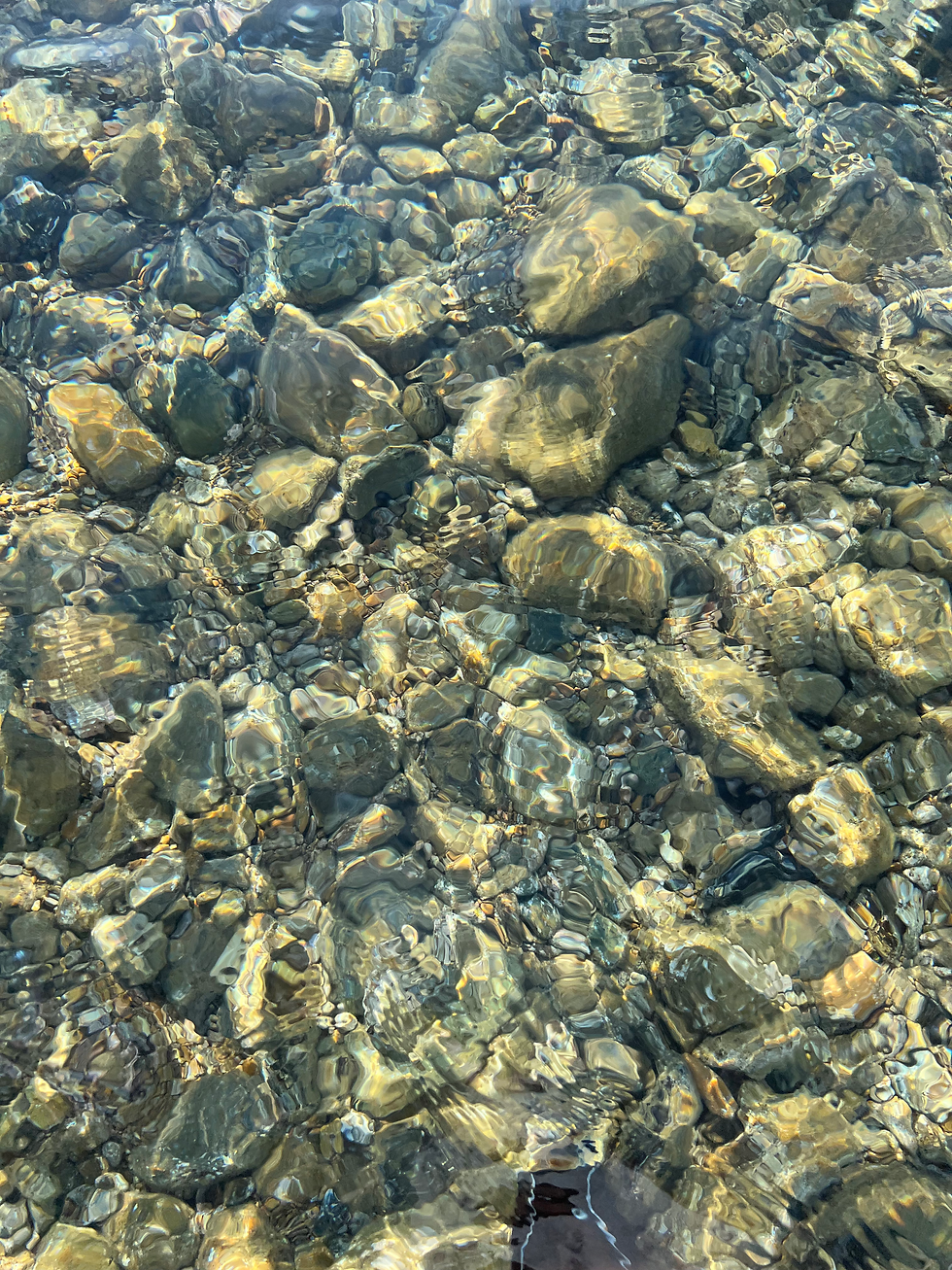After yesterday's delicious Turkish Mussa'qqa for dinner, a group decision was made to walk up to Assos this morning. We had to get rid of the calories. The four bottles of Corvus that went with the Mussa"qua needed to be compensated. To avoid the day time heat, we would start walking at 8.20 am. Serhan, our guide, thought this was brave...

Sunrise at 6.38 am - time for Coffee and Turkish Yoghurt with Honey
We wanted to visit the town where Aristotle taught. He came to Assos in 347 BC on the invitation of the local ruler Hermias who was also his friend. Aristotle had to leave Athens when he fell out with Plato's successor. Plato was his former mentor and teacher. Hermias also sponsored Aristotle and gave him the funds for an own academy. Unfortunately, two years later, Hermias was charged with treason by Persian officials, arrested and executed. Aristotle had to flee. First to Lesbos, then in 342 BC to Macedonia where he was hired by King Philipp II as teacher for young Alexander (the Great).

Plato (to the left) and Aristotle on Raphael's Painting
"School of Athens" in the Pope's Private Chambers
in Rome

Everybody was on time, the tender left at 8.15 am
Climbing to the Acropolis of Assos, which towers 238 meters above the sea, took only 40 minutes. On the way we passed the Greek amphitheatre, crossed Assos' massive town walls and saw the necropolis. The ruins date from the 6th century BC - nicely chiseled stone work. Assos was originally founded by Luwians, the same people who lived in Troy. By the 9th century though, Dorian Greeks arrived and rebuilt the town in Classical Greek style.

The beautiful Theatre of Assos was closed - had to "borrow" this photo from Google Maps
Assos lived from controlling the Strait between Lesbos and the mainland and was an important agricultural centre. Even today, the region is one of Turkey's prominent olive oil producers. As always, Serhan sat us down for a short lecture on the history of the site. We got spoilt! Tomorrow he will take us to Pergamon.

Serhan even finds a shading tree for his lecture
The Dorian Greeks in Assos built a large temple for the Goddess Athena and a port which is still in use today. Over time, other towns in the region became more prominent. Pergamon is a good example. It became the capital of a regional king and later the administrative centre of a Roman province. When we visit Pergamon tomorrow, we will find the town as it was during Roman time. Assos was spared - it is one of the few cities that preserved its original make-up. Built with tough, reddish volcanic rock - neighbouring Lesbos was once a giant volcano - Assos' masonry survived extremely well. The ancient city walls with its height of 14 meters and 8 towers are still standing.

The Dorian Temple of Athene with its 6 x 13 Columns is the only surviving Archaic Temple in Anatolia. it was built in around 530 AD - the same time the large temples in Magna Graecia were built. Parts of its fries are today in the Louvre in Paris and in Boston.
The importance of the strait between Lesbos and Assos was shown again recently during the refugee crisis. It is one of the main crossing points for illegal immigrants into the European Union. At its most narrow point, the strait is only 6 miles wide. The sea is usually tranquil. Trafficking people on improvised barques or dinghies is easy. The straits are now patrolled by Greek Frigates, Turkish Bayraktar Drones and Turkish Police Boats.

View from the Assos Acropolis towards Lesbos - the Strait here is only 6 miles wide
Turkish settlers arrived in Assos around the early 14th century. A modest mosque was built from the remains of a Byzantine church during the reign of Murad I (1359 - 1389) and is still in use today.

The ancient port of Assos was the only good harbour on the coast of Troad for 80 km. The modern port is built on the foundations of the ancient harbour.
Whilst we were strolling around on the Acropolis, our Casa Dell Arte was patently waiting for us. The boat would later take us to the Ayvelik Islands with their wonderful bays and the underwater road.

The Casa dell' Arte just a stone-throw away from the ancient port of Assos
After four days of wind from the south - the wind that all ancient mariners prayed for to sail up the Dardanelles and the Bosporus - the wind finally changed. We could set sail and glide in magnificent tranquility through the sea towards the Ayvelik Islands.

First Day of proper Sailing - Everybody took the Camera out

Ayvelik Islands are small Hills surrounded by the Sea

But they hold a secret which I have not been able to solve yet - why did anybody build this underwater street? It looks ancient and must have had a purpose - maybe I find out later today with the help of my friends
Post Scriptum:
The underwater way is an old ford that was used by local farmers to get to their islands. On the other side are a few decaying farm houses. The first few meters are concrete reinforced with steel rods - not older than 100 years.

A Turkish Family returning through the Ford
Then the ford is made up with large, rounded stones. It must be an ancient riverbed. Albeit whee the river came from and how this riverbed was formed remains a mystery.

Big, round and smooth Stones form this Ford
Bình luận